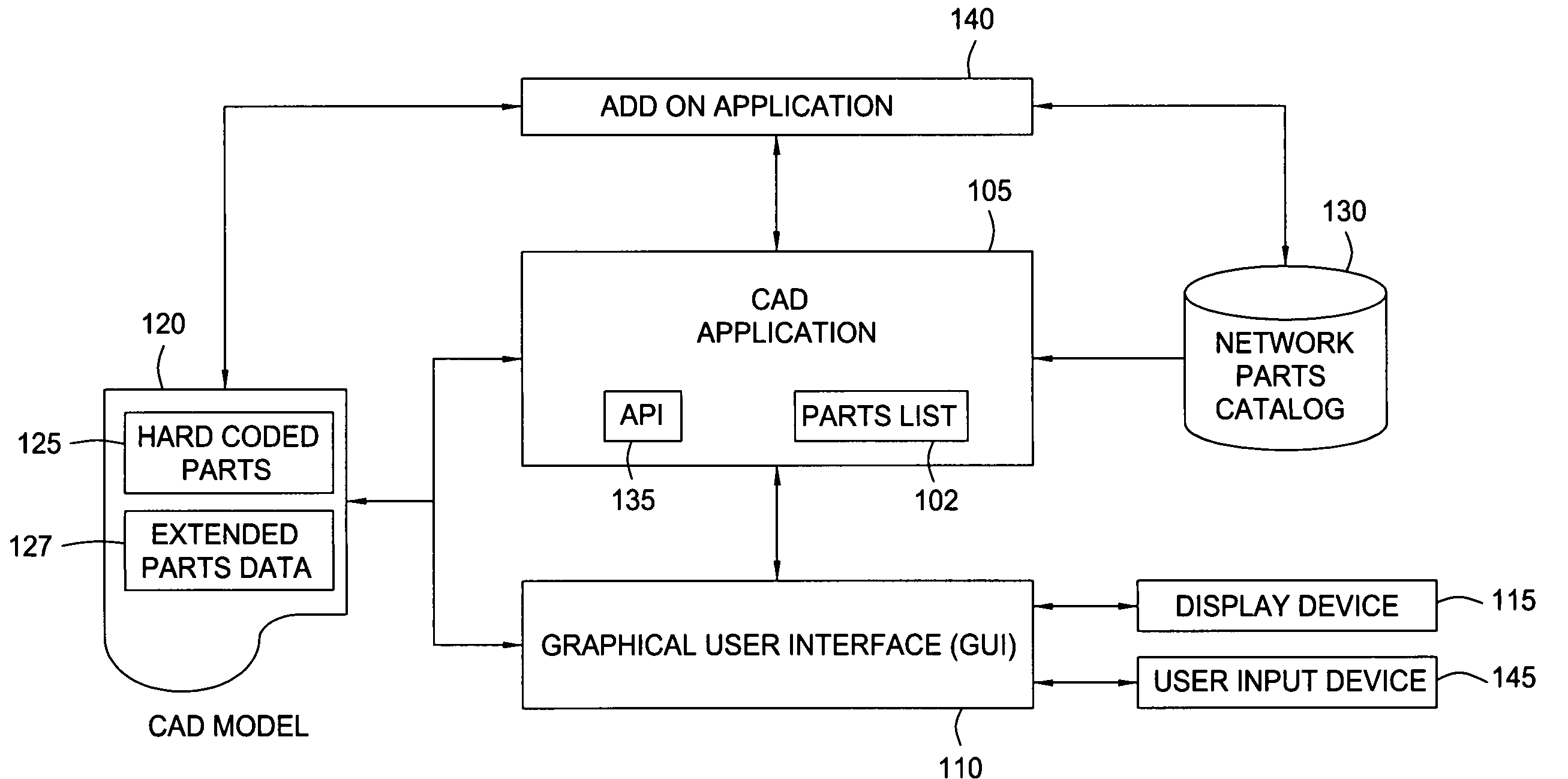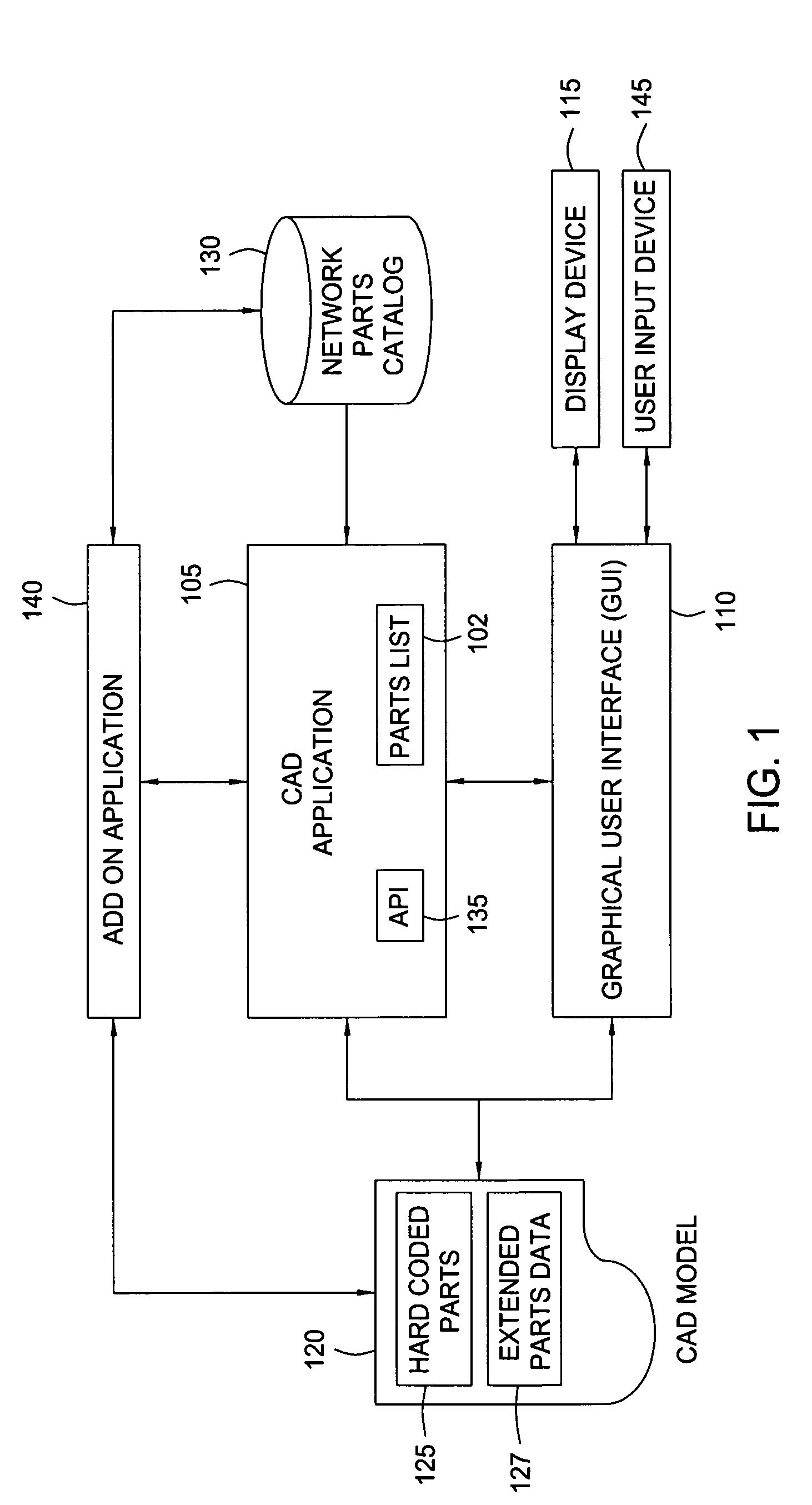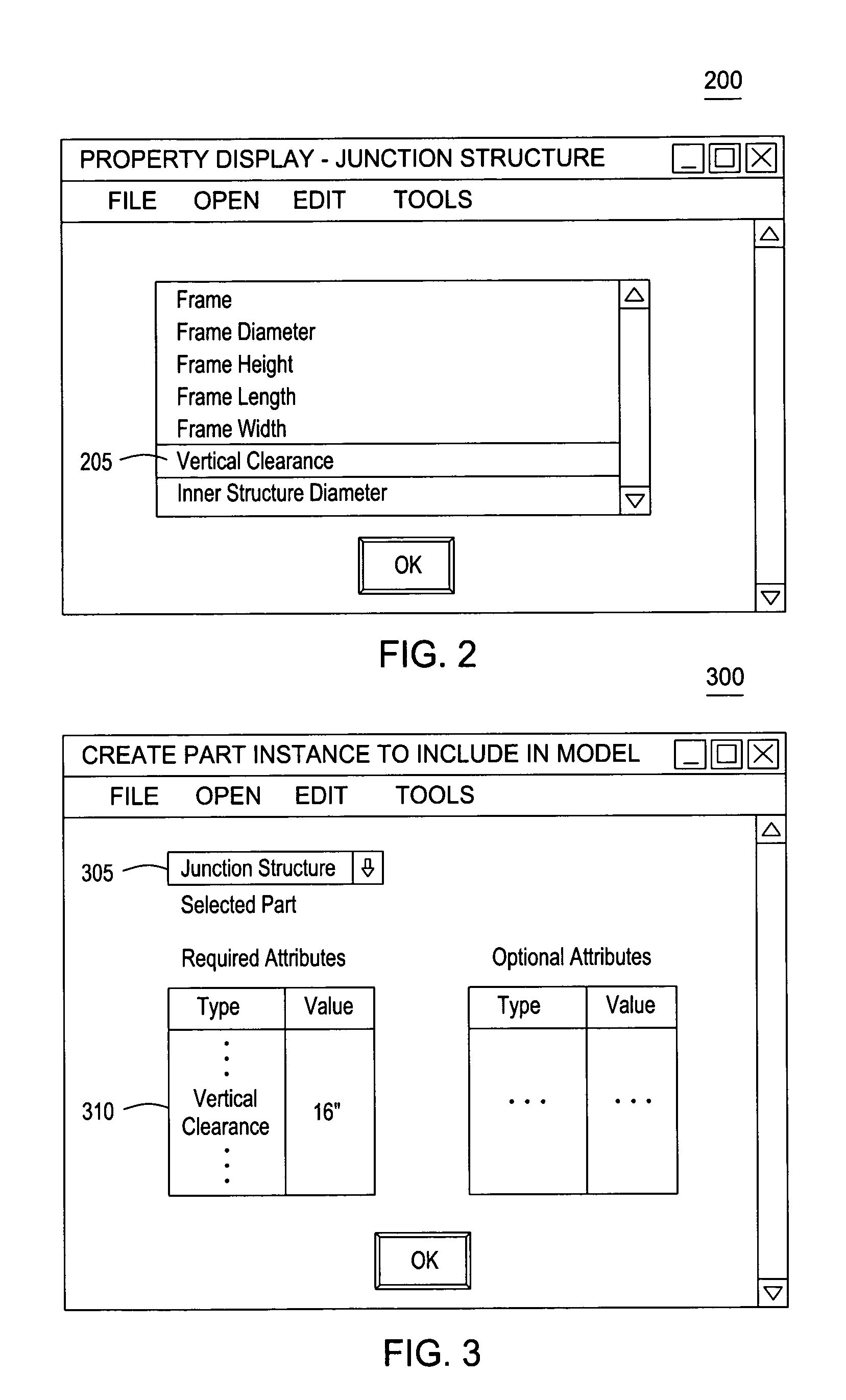Method and apparatus for extensible utility network part types and part properties in 3D computer models
a technology of utility network and part type, applied in the field of computer software, can solve the problems of limiting users, putting significant stress on developer resources, and unable to hard-code a global extension of the cad application,
- Summary
- Abstract
- Description
- Claims
- Application Information
AI Technical Summary
Benefits of technology
Problems solved by technology
Method used
Image
Examples
Embodiment Construction
[0027]Embodiments of the invention provide a method, apparatus and article of manufacture for creating a CAD of a utility network. The CAD model may be composed from a variety of network part objects (or more simply, just “parts”). Each part included in a CAD model may correspond to a real-world component of a utility network. Similarly, the CAD model may include a representation of the geography and terrain features for a real world location where the utility network exists, or may be constructed. In one embodiment, the CAD application may provide a collection of hard-coded part types, each with an associated set of attributes. Users may extend the network part types and part properties by declaring additional attributes to associate with a network part provided by the CAD application or parts catalog, and may also declare custom network part by specifying a set of existing (or new) attributes to associate with the custom part. Together the hard-coded parts and any declared extensi...
PUM
 Login to View More
Login to View More Abstract
Description
Claims
Application Information
 Login to View More
Login to View More - R&D
- Intellectual Property
- Life Sciences
- Materials
- Tech Scout
- Unparalleled Data Quality
- Higher Quality Content
- 60% Fewer Hallucinations
Browse by: Latest US Patents, China's latest patents, Technical Efficacy Thesaurus, Application Domain, Technology Topic, Popular Technical Reports.
© 2025 PatSnap. All rights reserved.Legal|Privacy policy|Modern Slavery Act Transparency Statement|Sitemap|About US| Contact US: help@patsnap.com



